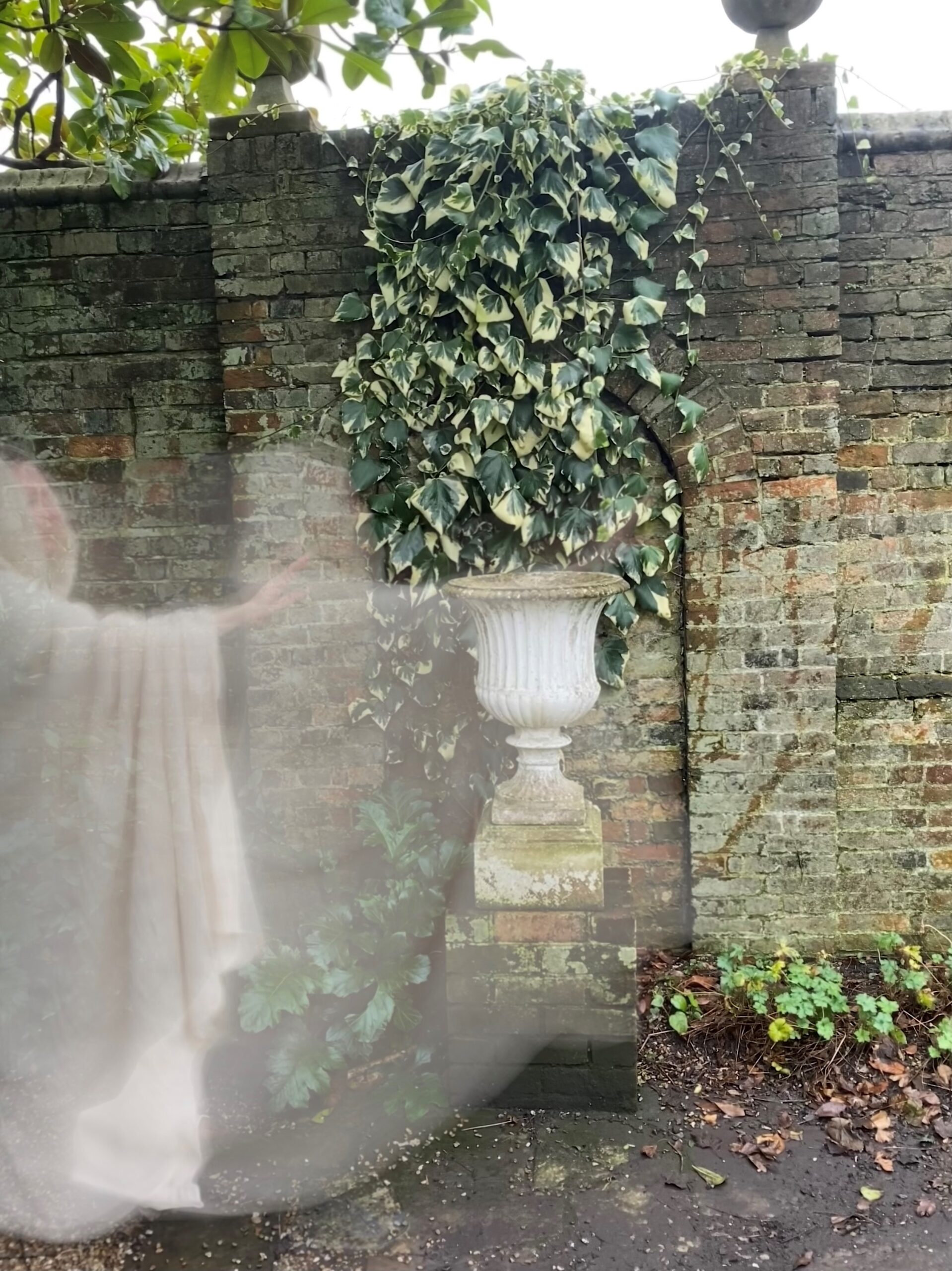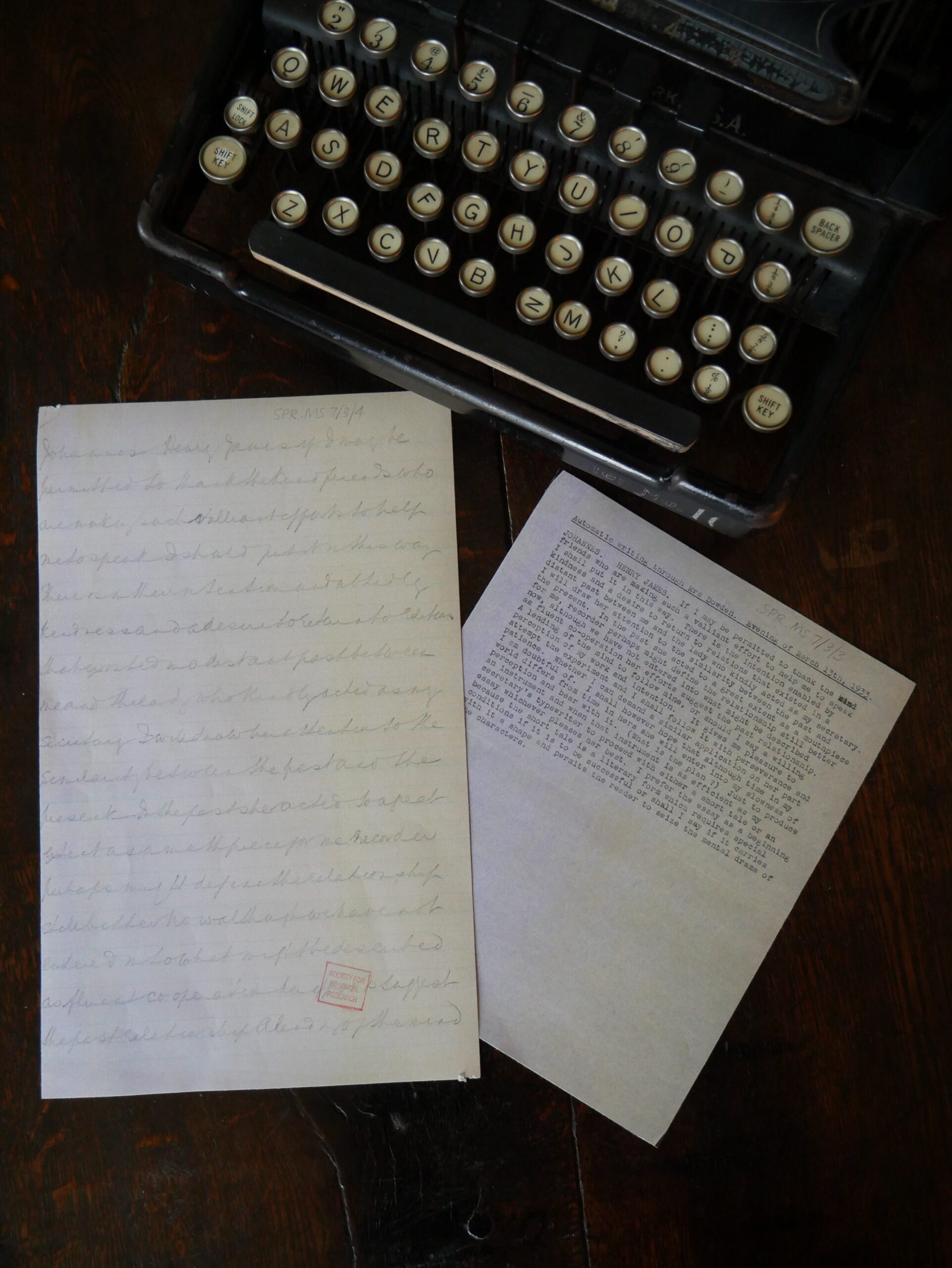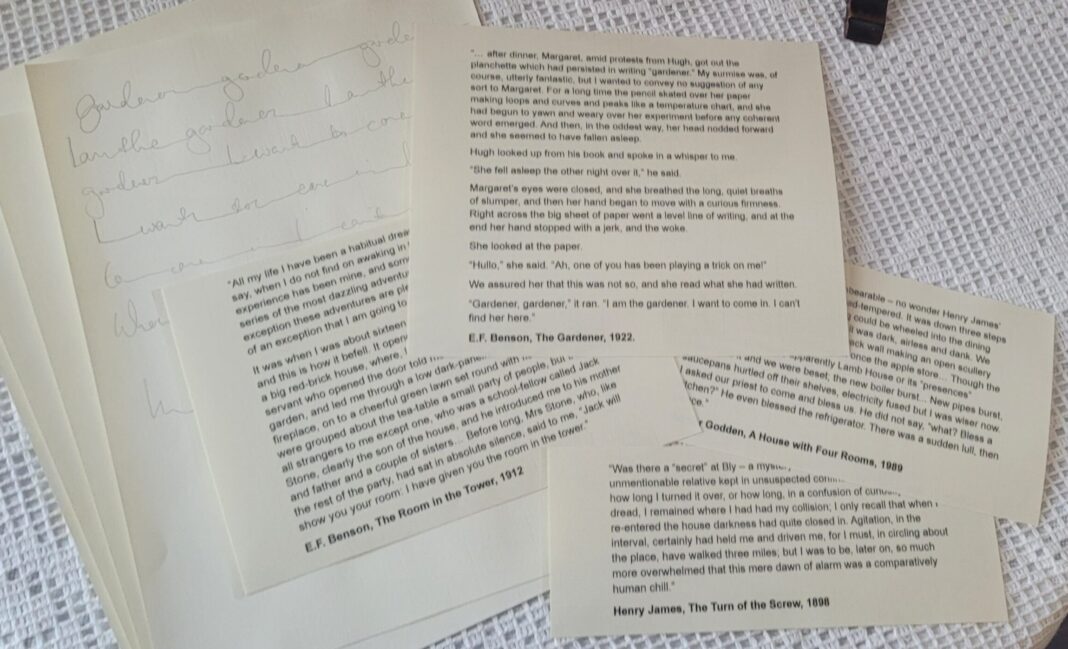What is it about Lamb House that made its inhabitants, Henry James, EF Benson and Rumer Godden so fascinated with ghostly tales? Perhaps it was because the story of the town of Rye is filled with reports of many hauntings. Or maybe because Lamb House, built by James Lamb in 1723, was so closely connected to one of Rye’s most infamous murders: a case of mistaken identity in which butcher John Breads killed the deputy mayor Allen Grebell instead of the mayor James Lamb in Rye churchyard. It is said that the ghost of John Breads still appears from time to time in the churchyard.
The new exhibition at Lamb House, Ghost Written, presented through objects and display hangings with specially created spirit photography in the White Parlour, focuses on the ghost stories of Henry James and EF (Fred) Benson. The late 19th century was a time when interest in the supernatural was flourishing and ghost stories were particularly popular.

Henry James moved into Lamb House in 1898 just as he was finishing his book The Turn of the Screw which was serialised in Colliers’ Weekly, and later wrote several short stories featuring ghosts. The Turn of the Screw was based on a story told by Edward White Benson, the archbishop of Canterbury and the father of EF Benson, a friend of Henry James. In it, a governess to two children in a remote country house experiences terrifying events and she becomes convinced that they are communicating with ghosts.
When Fred Benson moved into Lamb House after the death of Henry James, he continued the tradition of writing ghost stories. Benson’s interest in the spiritualism that was fashionable in the 1920s is reflected in his book Mapp and Lucia, in which Fred pokes fun at, and celebrates, the activities of the spiritualists – their seances, Ouija boards and mediums. Benson believed in ghosts himself and was convinced that he had seen a cloaked figure passing through a wall in Lamb House’s garden, and into the Garden Room.

Adding further context, fascinating displays show examples of automatic writing (used by psychics and mediums to allow spirits to communicate through the writer) along with quotes from Benson’s and James’ stories, and a transcript of what was claimed to be a message from Henry James to his amanuensis or secretary, Theodora Bosenquet, channelled via the medium Hester Dowden.
A Pepper mirror, used to give the illusion of a figure of a ghost on stage, is on display. With a series of lights and mirrors, an actor off-stage was projected on to the stage as a ghostly apparition.

A haunting of a different kind is explained in the exhibition. Rumer Godden moved into Lamb House in 1968 and wrote that, in writing in the Green Room (Henry James’ writing room) and living in the house of the ‘master’, she was haunted by his literary reputation and by his presence. On display is her 1989 book about life in Lamb House, A House with Four Rooms, in which she describes feeling presences that she compared to the fictional children from The Turn of the Screw, a testament to the power of the James’ legacy.
But it was not just the weight of James’ importance as a writer that Rumer Godden felt. She believed that there was a poltergeist at large: new pipes and a boiler burst, saucepans flew off shelves, the electrics fused and other things were moved or disappeared.
A large, illustrated edition of The Turn of the Screw is displayed alongside other limited print editions of books such as EF Benson’s More Spook Stories and The Tower.
Your visit may not result in a ghost sighting (though some swear they are about) but on entering the Green Room and seeing Henry James’ empty desk and typewriter, you may just get a fleeting glimpse of Theodora Bosenquet typing as he circles the room dictating to her. Or on entering the airy hall with its walls full of portraits of the writers and visitors who have crossed into the house, HG Wells, Rudyard Kipling, Virginia Wolf, Joseph Conrad, Ford Maddox Ford, George Bernard Shaw amongst others, the air around you might just crackle with the echoes of their words.
Lamb House reopened on Friday, February 28 until November 3 and from November 24 to December 22, Friday to Tuesday 11am – 5pm.
There will be a series of events linked to the exhibition over the coming months including ghost story readings, a screening at the Kino of The Innocents, talks, candle-lit haunted tours and the ever-popular Christmas opening. More details can be found here.
Image Credits: Lamb House / National Trust , National Trust Images , National Trust Images, Cassie Dickson , Wikimedia Commons https://commons.wikimedia.org/wiki/File:Peppers_Ghost.jpg Public Domain .




Joan Aiken, born in Jeakes House on Mermaid Street, wrote a wonderful short novel called The Haunting of Lamb House, which is well worth reading.